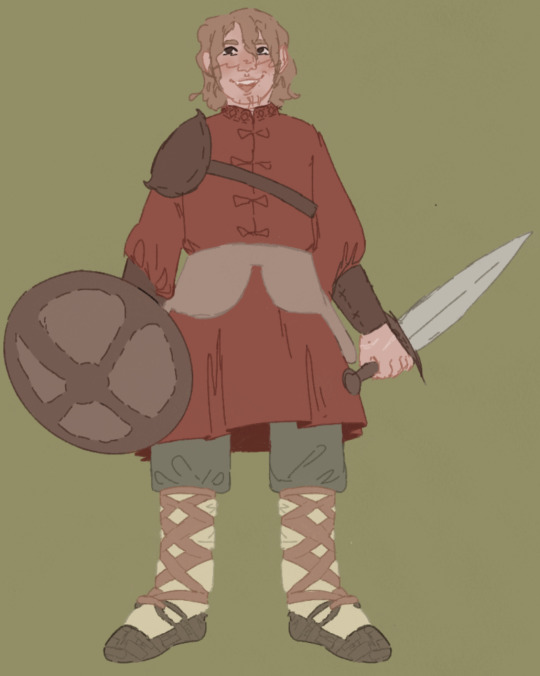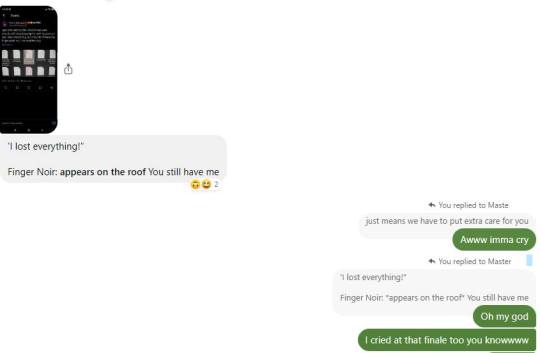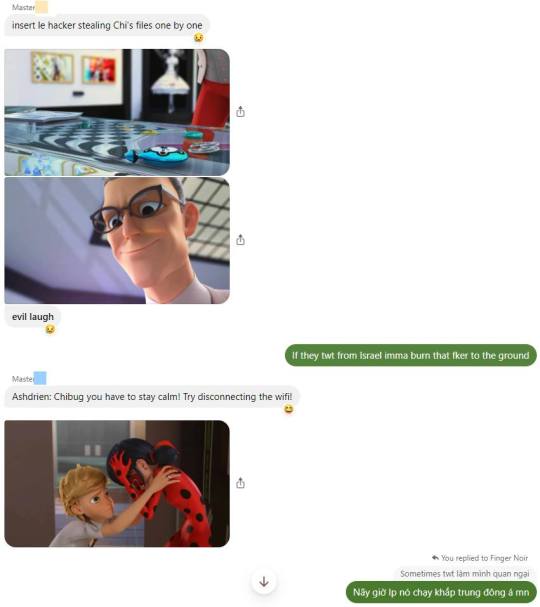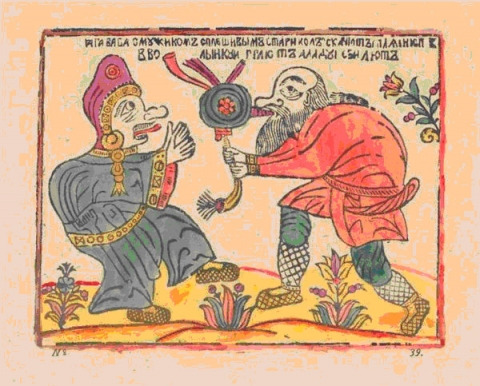#Lapti
Text
Nobody panic but I have NEW SHAKERS!!!!
So there are two new Swiftie shakers and four new Star Wars score shakers.


For the Swiftie shakers I have Cal Kestis with "Eyes Open" and Maul with "Vigilante Shit." Cal appears with his lightsaber and his poncho. Maul appears with his lightsaber and his modified Mandalorian gauntlet ship.




The Score shakers are as follows:
“The Book of Boba Fett” by Ludwig Göransson featuring Boba Fett, Fennec Shand, and the rancor.
“Lapti Nek” by John Williams featuring Max Rebo, Sy Snootles, and Droopy McCool
“Duel of the Fates” by John Williams featuring Maul, Qui-Gon Jinn, and Obi-Wan Kenobi
“Rebellions Are Built on Hope” by Michael Giacchino featuring Cassian Andor, Jyn Erso, Bodhi Rook, and K-2SO.
I hope you love these! I had so much fun making them and they came out so beautifully!
shop is here.
#star wars#rogue one#cassian andor#andor#jyn erso#bodhi rook#k2so#k-2so#darth maul#maul#obi wan kenobi#qui gon jinn#the phantom menace#duel of the fates#lapti nek#max rebo band#max rebo#sy snootles#return of the jedi#star wars original trilogy#droopy mccool#glup shitto#boba fett#the book of boba fett#the mandalorian#rancor#fennec shand#cal kestis#poncho#jedi survivor
37 notes
·
View notes
Text
youtube
Return of the Jedi - Lapti Nek music video
#star wars#star wars music#return of the jedi#lapti nek#sy snootles#max rebo#max rebo band#jabba the hutt#jabba's palace
28 notes
·
View notes
Text
I've just discovered I don't really know how to audition for a musical.
Like, I've seen a few. I know they involve singing and dancing. But do I just pick any song to audition with? Does Mitaka really want to hear my cover of Lapti Nek?
And dancing in armor is hard. Am I supposed to buy new clothes? Am I allowed to do that? I should probably check the employee handbook.
Normally, I'd ask Mitaka for help, but that feels like cheating.
#st-3v3#star wars#sequel trilogy#stormtrooper#lieutenant mitaka#musical#audition#singing and dancing#lapti nek#max rebo band
3 notes
·
View notes
Text

#funny#humor#star wars#return of the jedi#sy snootles#lapti nek#science fiction#fantasy#movies#movie posters#disney#disney movies
2 notes
·
View notes
Text
The real reason OG trilogy Star Wars fans hated the George Lucas revised version.
youtube
So this is the original scene from the first version of Return of the Jedi. This song was used in the marketing leading up to this movie’s release, with both a club and disco version produced.
youtube
youtube
The original Lapti Nek and Oola death scene is a lot darker and Jabba’s palace is seedy rather than just gross.
youtube
This is the replacement scene with the song “Jedi Rocks”. Both the dancers and the musicians seem to actually enjoy and take pride in what they’re doing, despite being in the Hutt’s presence. Which was not the intention in the original scene, or the Star Wars legends.

If you can find it, the 1995 Tales from Jabba’s Palace is a good read that uses the Lapti Nek version of the band and Oola. There’s also an anthology book of three “Tales from” collections called Star Wars Tales. It includes Tales from Tatooine and of the Bounty Hunters that Vader sent after Luke.

Without spoiling everything, just know that Jabba’s consorts hated him and pretty much everyone was trying to kill him, or survive long enough to escape “employment”. Jedi Rocks makes it seem like everyone likes working for him, when Hutts are supposed to be ruthless, greedy slavers and crime lords who trap talent.
You can see why someone who saw the original version and/or read the books would be upset about the change.
#Star Wars#star wars legends#star wars original trilogy#Lapti Nek#My advice is look into the old books if the new Star Wars content is getting you down. Reject Disney return to Legends lore.
2 notes
·
View notes
Text
Pluralicing everything by adding -I
0 notes
Text
Cursed with the knowledge that in Return of the Jedi, Max Rebo was originally playing Superfreak by Rick James before they dubbed in Lapti Nek for the final version instead
108 notes
·
View notes
Text

another of the southlands down :) i feel I'm drawing too much too fast. for me. but I enjoy this grain especially his lapti. they're so silly
12 notes
·
View notes
Text
Realized that bc I know the words to lapti nek that I will never find love
11 notes
·
View notes
Text
My buddies managed to turn my panic attack over ransomware into a re-tell of Miraculous Strikeback 💀💀💀

What I meant was my fingerprint saved my accounts lol

This is where the camera starts rolling @.@

Trans: If it hadn't eaten my SAI I would have drawn that scene.
(The hacker managed to mess up my IP so my location was "on Earth" 🤣)

Trans: The IP keeps jumping around the Middle East guys

Trans 1: Why everything I encountered has to be an MLB ref- When I said "MLB is my life," I did not mean it should come true wtffff
Trans 2: Damn it h-help me my belly hurts af

Tikki aka Lapty is my poor laptop, seeing me breaking down 😞

But nothing can stop me guys, as I will recover the damn files and draw again! (I hope ;;;w;;;)
And yes 800GB worth of data got encrypted I am so sad OTL
8 notes
·
View notes
Text
The Yaga journal: Baba Yaga in the lubok
Our next article in the Yaga journal (again, I skip a few which are honestly no fun or not interesting to translate) is “Baba Yaga in the luboks” by Galina Kabakova.
There has been research about Baba Yaga ever since the first publication of Russian fairytales. People kept debating the origins and symbolism of the character: is she tied to an initiation ritual, with death or birth, as Vladimir Propp said? Or is she rather a figure of the earth, or fertility? But all those questions are based on the analysis of folktales and oral fairytales. This article rather proposes to take a look at the folk-iconography of Baba Yaga, to study the way the character was drawn and illustrated to explore new roads and theories about the character - more specifically the article studies the Russian luboks of the 18th and 19th centuries.
I) Baba Yaga and her companions
When it comes to studying “popular illustrations”, two drawings keep popping up. One is “Yaga-baba goes to fight the crocodile”. The second is “Yaga Baba with a moujik, an old bald man, they jump while dancing”. Both images date from the 1760s and appear in the catalogue of Dimitri Rovinski.
The first picture appears in two different versions. The first has an inscription saying “Yaga-Baba goes to fight the crocodile, riding a pig, with a pestle in her hand. They have a bottle of wine under the bush.”

The second version has a different inscription: “Baba Yaga wooden-leg goes to fight the karkadil while riding a pig, armed with her pestle. There is wine.”.

These two pictures are fascinating because they depict a character ignored by Russian folklore: the crocodile. The book of Konstantine Bogdanov “Crocodiles in Russia” talks about the place this animal has in the Russian culture, and it insists on its “exotic” connotations. The korkodil or karkodil appears in medieval bestiaries and symbolizes either the devil, either hypocrisy (hence the expression “crocodile tears”). However these bestiaries depict the crocodile as he appears in real life, while the luboks rather paint a much more fantastical creature: it has the mane and legs of a lion, the tail of a wolf, the claws and beard of the devil.
Beyond the two versions of the Yaga with the crocodile, we also have the famous depiction of the Yaga with the Moujik:

This other companion of Baba Yaga, the moujik (note: in French it is “moujik” but in English I guess it is spelled “mujik”, the same way we call “loubok” the thing English spell as “lubok”), with his bagpipe, is dressed like a true peasant, with typical Russian shoes - the lapti. His bald head implies he is old. The Baba Yaga is represented very differently from one image to the next, and two depictions can even contradict each other - but all in all, she usually doesn’t look like the way she is described in fairy tales. The famous “bone leg” does not appear. She looks like a woman, but with exaggerated traits. She has a big, large nose that is curved upward while also being hooked, and in the three pictures above we see her enormous tongue coming out of her mouth. Plus, the dancing Baba Yaga is depicted as a hunchback.
In these engravings, Baba Yaga is dressed like rich Russian women of the 16th and 17th centuries. Her outfit is similar to the letnik, with embroidered sleeves and belts. She wears an earring and a necklace, indicating again a hgher status. Her cap is the one of a married woman (or of a widow) - but she is sometimes depicted with her hair uncovered and untied (such as in the second picture), which was thought to be indecent at the time. The Baba Yaga of the images 2 and 3 wear the lapti, just like the peasant-mujik, which creates a strange incoherence in her outfit, mixing rich and poor elements. In fact, some people point out that, with her cap, she looks like she is wearing a traditional Finnish woman outfit.
Just as interesting are the attributes of the Baba Yagas. The mortar of the broom that she uses in fairytales are absent here, and she rather rides a pig or a boar. In the two first picture, she is seen holding both feminine and masculine items: the comb (feminine) and the axe (masculine). We also see the pestle she holds in her hand. In fact, the pestle used as a weapon in found in other luboks - and it is used by Baba Yaga in fairytales (for example in “Fedor Vodovitch and Ivan Vodovitch”, she hits an old man with her pestle). The pestle is also the weapon of the wicked woman in the lubok - in a book of the 18th century we find a popular image depicting an evil wife chasing her husband out of the house, holding in her hands a pitcher and a pestle.
The strange couple formed by the crocodile and Baba Yaga has other interesting attributes: the bottle of wine near the crocodile, and a little boat that appears on the water. The symbolic landscape is also formed of flowers and branches - to signify a springtime flora. These depictions have been a mystery for the universities since more than a century. If the Baba Yaga of the luboks looks so little like her fairytale self, isn’t it rather an entire other character hiding under the name of the witch?
Dimitri Rovinski was the first to theorize that these images might be a political satire of the first Russian emperor, Peter the Great, and his wife. The boat would symbolize the passion the tsar had for the marine, which led him to build a new sea-side capital (Saint Petersburg). The Finnish outfit of the woman would be a reference to the origins of his second wife, the empress Catherine the First. The wine would denounce their known love for alcohol, and the marital position of the wife would be to evoke their tumultuous relationship. Rovinski suggested that these drawings and engravings were created by “old believers” that had a strong hatred of the imperials as their sworn ennemy, and thus called the emperor names such as “cat” and “crocodile”. Other popular images could be interpreted as a satire against Peter the Great: such as the cat in “Kazan’s cat, or The funeral of the cat by the mice”.
This interpretation was repeated several times by several searchers, and is still used to this day. But it opens quite a few questions. If the crocodile is indeed Peter, what would the beast’s large beard means, since Peter was known to hate and forbid beards? On top of that, the engravings we have come from the 1760s, and we have no proof that the originals were created half a century before. Diane Farrel in “Popular prints in the cultural century of the eighteenth-century Russia”, had doubts about the political context of thos pictures. She suggested that maybe the characters were tied to a carnivalesque world. Konstantin Bogdanov also insisted on a value of “pure entertainment” for those drawings, that are part of a long tradition of comical scenes depicting drunks and brawlers. These three engravings also seem to be part of an anti-feminist theme, to not say misogynistic, depicting women (especially young wives) as always trying to humiliate and abuse their husbands - sometimes this satire was aimed more precisely at foreign women.
II) Searching for the origins of Baba Yaga
When the author of the article prepared an anthology of etiological fairytales (it was published in 2005 as “Contes et légendes de Russie”, “Folktales and legends of Russia”), they found a very short tale recorded in Eastern Russia - in the valley of Kama, a region noticeable by a high percentage of “old-faith believers”. The story goes as such: A devil decided to create Baba Yaga. He gathered the twelve most wicked old women, and he cooked them in his cauldron. He tastes the result, then made them cook a little more. He tasted a second time, and he sneezed so hard all the door flew open. He ate a spoon of the brew, and spit. From the cauldron, Baba Yaga then sprung forth.
While the text appears in the Index of fairytale-types of Western Slavic tales (under the number SUS 1169), it stays an isolated phenomenon because no other version was recorded in Russia, and it is not present in either Bielorussia or Ukraine. It was after publishing this text that the author of the article discovered a lubok page, made of eight mages, forming a sequence depicting the creation of Baba Yaga. The fairytale quoted above seems to be an abbridged version of the tale depicted by the lubok.

This lubok is quite rare, as it does not appear in the catalogue of folk-images of Dimitri Rovinski. One copy of it is kept at the Museum of religious history in Saint-Petersburgh, another at the National Library of Saint-Petersburgh, and a final at the National Library of France. It is this last copy that was reproduced above, in the monography of Catherine Claudon-Adhémar, “Imagerie populaire russe” (Russian folk-imagery), 1977. Here is the full text of the legend:
Origins and formation of Baba Yaga. The devil in chief, or leader of all devils, while being a great chemist, decided to invent an evil that would be greater than his own power. In this goal, he cooked twelve wicked women, because physics taught him that it was the best and most profitable way. After mathematic calculations, he understood that each wicked woman contains bad alcohol, compared to a regular devil, in the proportion of seven against twelve, and against his own person a seventh. By cooking the particles of the bad alcohol he set them free with the steam, but since he had nothing to contain them, he caught them with his mouth and swallowed them. At the end of the cooking, there was in the cauldron only burned matter ; he spit in the cauldron, and the alcohol mixed with the saliva of the devil fell onto the ashes, and all of this fusing together, created Baba Yaga.The devil considered her to be the ultimate evil, and he placed her in a jar, wanting to create afterward a dozen more Baba Yaga like her, and by cooking them together greating an even more perfect evil. But by weighing the evil that she contained, and comparing it to the evil present in the high-society women, he realized, disappointed, that these ladies, even without cooking, were not outweighed by her. This made him so angry that, out of dejection, he threw the jar onto the ground, and it broke in a thousand pieces, and the legs of Baba Yaga were ripped and broken. This made the devil return to his senses: understanding he was freeing the world of a great evil, he quickly gave to Baba Yaga legs of bones, he taught her wtchcraft, and so she could leave hell he gave her for a drive an old iron mortar that was laying around in his laboratory, and an iron pestle to lead the mortar - and she is still using them to this day to travel the world, doing evil wherever she goes.
This is a clearly satirical text that insists on the “scientifical” aspect of the creation of Baba Yaga, invoking mathematics, chemistry and physics. But it is clear that this lubok was clearly aiming to mock the wickedness of women. Even though for once, upper-class women are more clearly the target. This satire can have roots in a Western model: there is the famous Lustucru series in France where the smith by the same name tries to re-shape women, and he even uses an alchemical still to do so. The motif of creating life reminds the homonculus of the Middle-Ages, while Baba Yaga and the upper-class woman being weighed together reminds the religious icons such as “Saint Michael and Satan weighing the souls of the sinners.”
But there are also several motifs typical of etiological tales, such as saliva being used to create a human figure (usually the divine saliva helps build clay figurines that become the first humans). In the oral tradictions, there are tales that depict the devil as a creator: for example, sometimes he is responsible for creating the different nations. An Ukrainian tale depicts him in this role, and the story is quite similar to the one of the lubok above: the devil puts herbs and pitch in his cauldron, and cooks them. After it cooked enough, he first takes out of it an Ukrainian, then a German, then a Tatar, then a Jew - and the latter is considered by the devil as the most successful of the four. Even if this tale is supposedly etiological, we find back here the permanent trait of the devil: he is a misfortunate creator, he tries to create man but fails, or he tries to imitate the work of God but ends up creating something else entirely. And in the case of those stories, he tries to create something new that could harm much more than he does, and in the end he merely re-creates the already wicked women of the world.
The simplicity of the drawing makes the author think that the one who created this lubok did not copy a Western engraving (unlike other lubok - such as the one of a couple fighting each other to know who is going to wear the pants). The artist is quite clumsy. The devil looks like a man, but with the typical attributes of a Russian devil: a tail, horns and a goat’s beard, rooster claws, but also wings to remember his celestial origin (this last detail is not constant in the depictions of Satan). Is the great similarity in the designs of the devil, the women and Baba Yaga an intended detail? The author rather thinks it is because of the lack of talent of the engraver. It should also be noted that Baba Yaga and the upper-class women are depictedwth a great simplity: no sign of their status, no sign of vanity. The only details that form the portrait of the wicked witch are her two legs (instead of one in the folklore) of bone, and her mortar with its pestle.
Searching for the origins of the mysterious lubok led the author of the article into the world of peddling literature, which had a heavy role in adapting and re-creating folktales. This “lubok literature” existed long before the “scientific” publication of the fairytales in the 19th century. Alexandre Afanassiev used numerous books of lubok of the second half of the 18th century, because he believed they were the closest to the oral folktales. And as such, the author managed to find the text of the lubok in a fairytale called “Tale of the sir Zaolechanine, brave in service of the prince Vladimir” which is part of the “Russian tales” in 10 volumes of Vassili Levchine (published in 1780). This text, unlike the one of the lubok, mentions the term of alchemy “caput mortuum” (mummy-brown), which allows to create the worst of all creatures, Baba Yaga:
Of the origin of Baba Yaga. The devil in chief, or the devil above all other devils, who was a great chemist, cooked twelve evil women, hoping to obtain from them an essence of evil that would outdo him in wickedness. Physics had taught him that it was the best and most profitable material. According to his mathematical operatons, each wicked women contained bad alcohol in a proportion of 7 against 22 (against a regular devil) - against him, it was an 11th, and this is why he cooked twelve. But since the still hadn’t been invented, he caught with his own mouth the alcohol particles that escaped from the steam. At the end of the cooking, was only left in the cauldron “caput mortuum”. The devil spit in the cauldron, the alcohol mixed to the saliva of the devil fell on the caput mortuum and the devil saw something that was beyond all of his expectations, as Baba Yaga appeared out of the cauldron.
In the tale of Levchine, this text is under a drawn portrait hanging on the wall of an enchanted castle, and it ends with a warning: “This tale is told to you, o curious reader, from someone who is protecting your savior. But, as it is agreed that the mystery revealed against the will of a woman must be punished, for your disobediance be transformed into Baba Yaga”. And indeed, when the character tells of his discovery to others, he is turned into a dragon.
III) Baba Yaga in the lubok literature
In the lubok literature, we find back the same motifs as oral tales, but some are modified, and others added. For example the motif of cannibalism: let’s take the fairy tale type ATU 327C, “The devil brings back home a child in a bag”. In the Russian version of the tale, it is always the witch Baba Yaga who captures a child and tries to cook them in her oven. In popular versions of this tale, such as in “Hansel and Gretel” of the brothers Grimm, it is the witch or her daughter or both that end up burned into the fire by the clever child. In lubok literature, things are very different. For example, in “The tale of sir Zaolechanine”, the witch not only successfully captures a six-year old child, but she also manages to roast him and eat him. The assimilation between Baba Yaga and the dragon, who is the antagonist of the hero in the tale, is also quite different from oral tradition. In “The second tale of Ivan Tsarevitch”, from the Russian Fairytales of Piotr Timofeev (1787), the dragon-king Erakski captures Maria Morevna, and then goes to war against Baba Yaga, which allows Ivan Tsarevitch to save Maria whila the dragon is away. Usually, in fairytales, it is the job of the hero to fight and kill the wicked dragon. Simlarly, in the “Tale of Leviane the brave”, from the anonymous book “The Narrator of Russian fairytales” (1787), it isn’t the hero that is asked to keep the fabulous horses of Baba Yaga, unlike in the popular fairytale “The magical horse” (ATU 302C), it is rather Kachtchej the Immortal, another fearsome antagonist, that must take on this job.
In the “Tale of sir Zaolechanine”, we also discover some “romantic” themes invented by the author: Baba Yaga adopts the female protagonist, and she falls in love with the winged dragon, who doesn’t love her back. However she visits him every day, and sometimes goes back to her house in tears, and sometimes in “great anger that always ends up in sigh”. And to end, when Baba Yaga dies, “her petty soul leaves her miserable body and falls into hell”. But it is especially in the descriptions that we find elements absent from oral versions. For example, in “The second tale of Ivan Tsarevitch”, the witch lives in a palace protected by an iron barrier - instead of a hut on top of chicken legs. In an anonymous version of “The fire-bird and the gold-mane horse”, published in Moscow in 1860, we have a description of the witch as having the head of a pig, the tail of the crow or a tail of bones” - or she has “two horns, a dog head, a goose’s nose, a tin tail”. And other times, it is written “the awful Baba Yaga with long teeth, a bone leg, a cast-iron head and a clay tail.” It must be remembered that the folkloric character of Baba Yaga is barely described, and when she is it is another set of traits that is put forward. In folklore it is her traits tied to the world of the dead or the reptile that are brought forward: she only has one leg, and it is a leg of bones (or a bony leg, aka a very skinny one). Her nose is sometimes so long it touches the ceiling. Other times, the traits described are about an hypertrophied feminity: breasts so enormous they cannot be hold in the room and overflow out of the door. Finally, there are also a few mix-and-match details, such as a nose made of iron or a face made of clay.
To conclude this study of iconography and engraving of legends, the author says that the lubok takes the character of the fairytales, this popular character of oral tradition, not to retell its story faithfully, but to mock through it the weaknesses and flaws of women, focalizing especially on upper-class women and foreign women. Folk-imagery is thus very revealing of social, racial and gender prejudices very common at the time.
#the yaga journal#baba yaga#russian folklore#russian folktales#lubok#russian fairytales#antisemitism in fairytales#misogyny in fairytales
16 notes
·
View notes
Note
You should check the audition info posted in the break room and see what instructions are there! At the audition, you’ll probably fill out a questionnaire about what characters you’re trying out for and your previous performance experience. Usually you want to pick a song from a musical rather than a pop song…but thanks to the Max Rebo jukebox musical that came out a while back, Lapti Nek actually counts as a theatre song now. Besides dancing, you’ll also be given scenes from the show to act out with other people at the audition. A few days after the audition, some people go to callbacks, which is when the director calls certain people back to do more singing and line-reading for a second look. And ST-3V3…I’m pretty sure you’ll get in. Community theatre NEVER gets enough guys to audition. If you’re halfway decent, you’ll get in, bro. Even if it’s just an ensemble role.
That sounds like. . . a lot. But I'll give it a shot. Why not?
Deej can probably teach me a few dance moves. And maybe the Captain can give me some pointers for the singing bit. And I am a dude, so I guess I have that going for me.
Maybe I'll be a star and get real famous and everone will finally treat me with the respect I deserve.
Or maybe I'll just have an activity that allows me to not wear armor for a few nights a week.
Either way is good.
#st-3v3#star wars#sequel trilogy#stormtrooper#ask#captain phasma#dg-1994#auditions#fame#I'm gonna live forever#armor
4 notes
·
View notes
Text
Disney
Lucasfilm
Please give us an album of diagetic Star Wars music.
Jedi Rocks, Mad About Me, Jabba Flow, Lapti Nek, Igyah Kah, Chicken in a Pot.... and all the others that are just named after their location.
Please! Not enough of them are included in the normal soundtracks!
4 notes
·
View notes
Note
Not sure if you remember but i saw you mention in the tags or something about how you had an oc that was the child of the god of slavic fox stories n was just curious about that idea of yours

[ID: A digital, colored sketch of three humanoid figures. The far left features a young dark-skinned child with a spotted dress and hairband, meant to look like a fly agaric mushroom. She's wearing lapti, aka traditional woven russian shoes, and has mushrooms growing around her, with a baba yaga figure floating in the distance over her. In the middle is the mother, a regular human with shoulder-length kinky hair, dark skin, large glasses, and a casual librarian outfit. The last figure is stylistically blocky, featuring a light-skinned man with a somewhat traditional russian getup, boots, and a balaika slung over his shoulder. He has two fox tails and a hat resembling a fox head. End ID]
Well I wouldn't count them as ocs per say just because it's a loose idea rattling around in my brain and not solidified as a story I'd definitely want to pursue, but sure I can talk about it a bit! The idea is about story "gods" that represent a specific reoccurring idea/animal/character/etc living in a space beyond the spoken and written word, so like. There'd be a god of the big bad wolf, or cinderella, etc, although I wanted to focus on Russian fantasy so in comes the god of Russian story foxes, such as the one that stole the cheese from the crow or pursued the grapes. He represents all of the iterations of these foxes and sort of guards and guides them, but he got bored of that and started observing the real world, through windows created by open books. He then encountered a librarian whom he developed a crush on, entered the real world one day to introduce himself (super forbidden for story gods to physically manifest irl), ended up developing an actual romantic relationship with her and would be in the story world less and less. He then broke the ultimate rule and created a daughter (stories are meant to be created, not creators, and especially not something irl) but was forced to return after A) his prolonged stay in the physical world started literally disintegrating him and B) when he returned, there were active efforts to keep them there without ever contacting the outside world again. This daughter grew for a few years and long story short, discovered she could travel through books, met her dad, they had a reckless adventure bc he was so excited to spend time with her, etc etc. She appears human in the physical world, but apart from book travel, can create mushrooms under her feet bc mushrooms are very entrenched in russian culture and it's also very cute :]
And here's a bonus drawing of the daughter and my design of baba yaga :]

[ID: A digital drawing of two figures. The one on the left is the same child as mentioned above, shying away from the looming figure before her and being the only colored thing in the drawing. The person on the right is baba yaga, designed as a hooded creature with small eyes, a sharp-toothed grin, no nose, and carrying a large sack. She's emerging from her iconic mortar, holding a broom with a handle made from birch tree. The scenery behind them consists of a pure-black forest, with white birch trees blocking the way. End ID]
#again idk if ill ever do anything with this concept for many reasons#one its a story that takes place on earth and i dont find much fun from that#two id like this to be a collab project bc i only know so much#and three i just am not feeling it rn#but its def a fun idea glad u were interested in it :]#ive always wanted to redesign baba yaga bc im tired of her having the antisemetic hooked nose that classical witches tend to have#and also i want her to actually scare me#i do really love the design of the daughter tho i should at least give a name for her
12 notes
·
View notes
Text
A Long Time Ago in a Theatre Far, Far Away....
Like so many I am a big lover of Star Wars. Unlike so many, though, I'm an original 77er; having seen the film first run. In point of fact I've see all three movies first run.
Naturally I soaked up everything Star Wars as a boy. EVERYTHING. Which included From Star Wars to Jedi: The making of a Saga; included in the then 25th anniversary VHS box set. (Which, like many early interviews with Lucas, revealed that there was no actual plan for all the films, as later claimed.)
In this clip, narrated by a very young Mark Hamill, we get a glimpse into the making of the various creatures that inhabit the palace of Jabba the Hut; nefarious gangster of Tatooine; with a very interesting reveal about Jabba's development history...
youtube
One of the more fascinating things for me is the development Sy Snootles and The Rebo Band. I have always enjoyed their hit song, that appeared in Return of the Jedi "Lapti Nek".
The clip above also features one of the two music tracks I still don't own from the original series; Lapti Nek (English version) whose lyrics where penned by Joseph Williams, son of John Williams, and translated into Hutteese. It's available on the original soundtrack, as well as various out of print side projects, and - obviously - Mecco's huge disco hits album. But my favorite cover is by Rue Mevlana; who adds a much appreciated modern 21st century flair to the whole of the thing.
youtube
2 notes
·
View notes